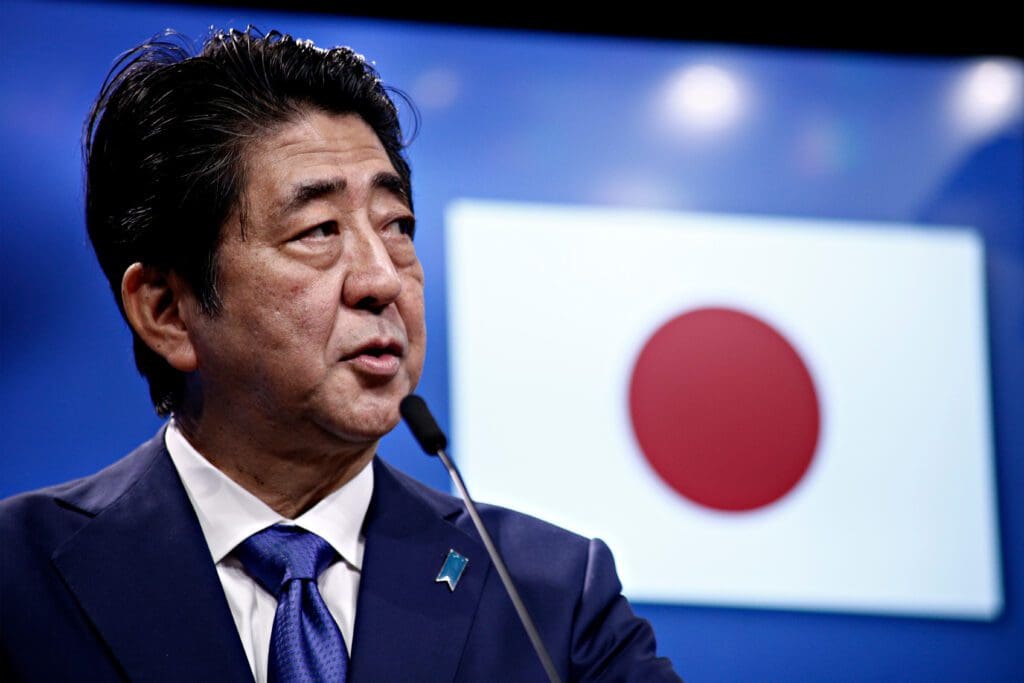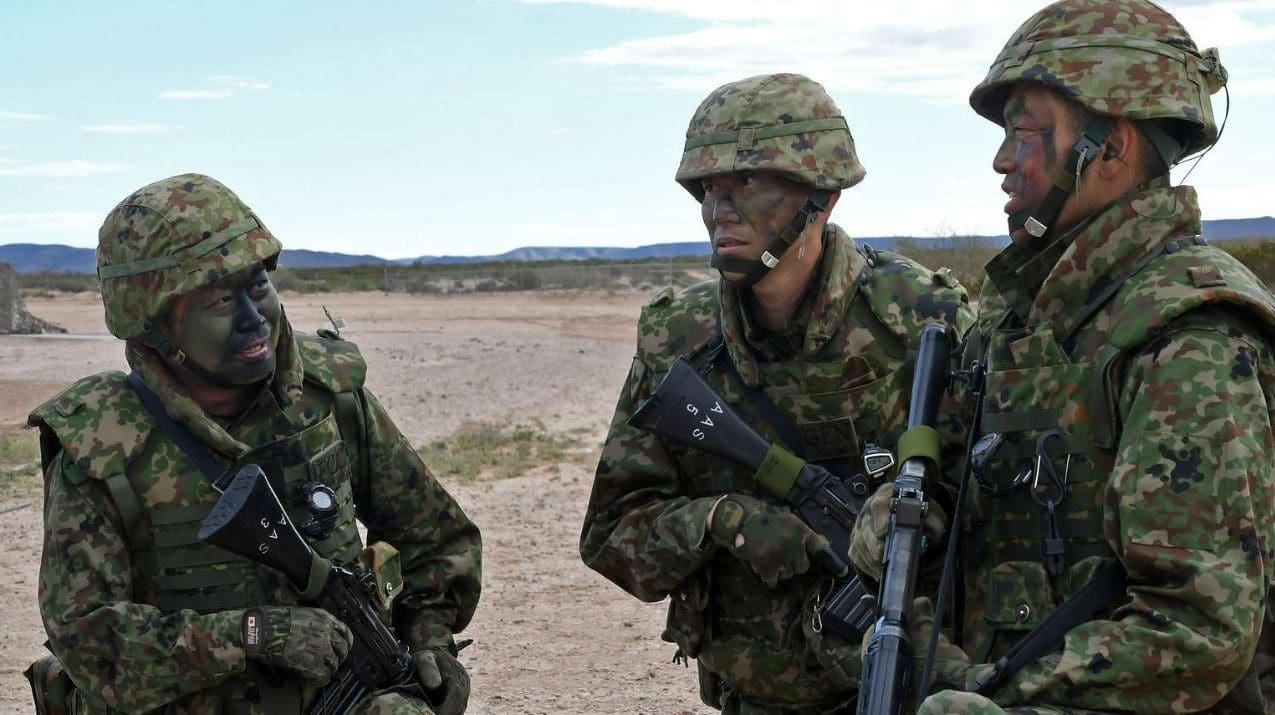The following is a translation of an article written by journalist Tamás Maráczi, originally published in Mandiner.
In the absence of a peace treaty with Russia, Japan has not yet practically ended World War II—and now it is acutely feeling the ominous signs of another global conflict. The island nation is trying to take control of its destiny under the shadow of today’s superpower militarisation and the war in Ukraine. A report from Japan by Mandiner.
The war in Ukraine caused trauma not only on our continent but also in other parts of the globe, depending on the distance and the level of threat. In Europe, for the first time in a long time, the reality of war appeared as an immediate and imminent threat. In the countries of the Far East, meanwhile, the fear is less, but the situation causes no less anxiety due to geopolitical connections.
The largest country in the world has power in the Far East as well: Russia is very much present in the region, as demonstrated by the annexation of Crimea in 2014 and last year’s aggression proving that the security status quo can be upset.
The country has territorial disputes with, among others, China and Japan—for this reason, it has not concluded a peace treaty with the latter since 1945.
For the time being, China is biding its time and watching how far the West will go in defending Ukraine and punishing Russia. It is not only about Ukraine that the Western alliance, led by the United States, has embarked on the policy of providing weapons and imposing sanctions—in fact, the real geopolitical battlefield is the region of the Pacific Ocean. This means that the Western severity is addressed to Beijing, too: just as the West is currently defending Ukraine, it will act against China in the same way if it attacks Taiwan or Japan.
The United States is a military ally of the Far Eastern states of Japan, South Korea, Taiwan, and the Philippines, all threatened by China (and North Korea). America is ready to take risks and make sacrifices for its geopolitical and military interests in the region and, with it, to protect its partners.
Namely, it is in the interest of the US that China cannot grow into a dominant power in the Pacific region,
however, preventing this is an increasingly difficult task. The USA’s strongest regional ally, Japan, is acutely aware of this; its concerns are clearly shown by the government decisions made in recent years, the revision of the National Security Strategy and then the National Defence Strategy, as well as the country’s militarisation. That is, the increasingly undisguised preparation for the explosion of the growing tensions, i.e. a big conflict, behind the scenes.
In the Shackles of the Peace Clause
Japan’s problem now has in fact been its solution so far: its pacifist Constitution has ruled out the possibility of an armed conflict for seven decades, but in the recently emerging geopolitical situation, this absolute demilitarisation has become the obstacle to the necessary responses to security threats and self-defence.
The Constitution of Japan, which came into effect in 1947 and has been in force ever since, was largely based on the draft by the occupying US Army, the winning power of WWII in the region. Article 9 of the Japanese Constitution,
the so-called Peace Clause, states that Japan forever renounces the sovereign right of belligerency
and the maintenance of armed forces with war potential, outlawing war as a means to settle international disputes involving the state. In order to accomplish this, the country will never sustain land, sea, and air forces, as well as any other war potential. The implied aim of the Constitution was to dismantle and turn militant Japan, responsible for the war, into a pacifist state—and over time, pacifism became a decisive part of the country’s social and state identity. The official defence doctrine of the period between 1945 and 1990 was that the country focuses on economic growth under the protective screens of the US military alliance, contributes to establishing international security only by economic means, and limits the armed forces’ task exclusively to internal security and disaster management.
The rebuilding of the independent Japanese Army began in the 1950s, during the Korean War. Later, the idea of the right to self-defence strengthened. In the 1970s, as a result of China’s militarisation, Japan also developed its army, doubling the former one per cent defence budget of its gross domestic product. By the 1980s, the Japanese armed forces took over the protection of the country’s sovereignty and airspace, and Japan, which was carrying out a quantum leap in technology at the time, had become a major weapon exporter.
However, by the end of the Cold War, both the security environment and the Japanese political expectations changed:
in accordance with its increased geopolitical importance, Tokyo wanted to be involved in maintaining international security, too.
When international missions began, Japanese units also started to take part, but of course exclusively in peaceful operations.
The 2001 terrorist attacks in the USA resulted in a paradigm shift in US–Japanese security cooperation. From then on, Washington expected active help from its military ally—and it received it, as the Japanese were providing logistical assistance in the Iraq and Afghanistan wars. In exchange, Japan asked for—and received—reinforced guarantees from the USA against the growing North Korean and Chinese threats. In 2007, the Japanese security sovereignty was completed by its Defence Agency becoming the Ministry of Defence. Then, in 2013, the National Security Council was also established. Today, Japan has the sixth-largest military defence budget in the world.
A principle of the first official national security strategy, prepared at the end of 2013, dictated that the country should play a greater role in maintaining the international order as a regional leading power. However, its status still should not pose a threat to the security of other states—thus, Japan would remain a ‘peaceful nation’. The aim of this strategy was to protect the country’s territorial integrity effectively and to enhance its deterrence in order to increase the efficiency of its self-defence.

‘Ten years ago, Prime Minister Shinzo Abe tried to tighten Japanese–Chinese relations with his diplomacy, and thus separate China from Russia, as well as to transform economic relations with the states of the Association of Southeast Asian Nations into a political and partly military alliance,’ Heigo Sato, professor of International Relations at Takushoku University, explained to Mandiner in the phalanstery-like building of the Ministry of Foreign Affairs in Tokyo. According to the expert,
China’s economy has been remarkably catching up with Japan’s in the last thirty years,
and in the coming years, Chinese military capabilities will also increase, forcing the island nation’s hand.
In recent decades, constitutional amendments, namely the issue of redrafting the ‘pacifist’ Article 9, have been raised from time to time in Japanese domestic politics in order to enhance the efficiency of the country’s defence. However, this legislative process is quite complicated: two Parliament chambers need a two-thirds majority to adopt the amendments, and so far, no government has been able to gain the support of those proportions.
They Call It a Challenge, but They See It as a Threat
In December 2022, almost a decade after the first one, Japanese defence experts developed a new national security strategy. They did so for the stated reason that ‘since World War II, Japan has not faced such serious and complex security challenges as it is facing now,’ as well as the sources of these challenges:
North Korea poses a ‘serious and direct threat’, while China represents ‘the greatest strategic challenge’ to Japan’s security.
Indeed, three of the infamous quartet of Russia, North Korea, China, and Iran, considered by the West to be the four most dangerous states in the world, lie in the immediate vicinity of Japan. And there is one thing making the country a prominent target in their eyes: it is their common enemy, the number one ally of the United States in the region.
The first move in China’s near-future military chess game may be to take down Taiwan, which is an easier target than Japan. At the same time, Tokyo has practical concerns about Taiwan: Japan gets its energy supplies through the South China Sea, mainly from Saudi Arabia and Australia, so if China took a radical step to take control of Taiwan, it could cut off sea shipping routes between Japan and its source countries.
China’s unsustainable defence budget, military modernisation, non-transparent weapons development, and North Korea’s ballistic missile and nuclear programme have kept Japan, clinging to the status quo, in a state of uncertainty for years now.
Chinese warships are regularly challenging Japanese Coast Guard vessels in the East China Sea,
and during their naval exercises off the coast of Taiwan last year, some of their ballistic missiles crashed into the sea in Japanese territorial waters. During North Korea’s ballistic missile experiment last October, a missile even flew over the territory of the island nation. And after Tokyo also imposed sanctions on Moscow due to its aggression in Ukraine, the activity of Russian warships on the northern coast of Japan intensified as well.
‘Japan does not accept Russian aggression, and the unilateral change of state borders,’ Norifumi Kondo, director of the Central and South Eastern Europe Division at the Ministry of Foreign Affairs of Japan, told Mandiner. He also emphasised that Japanese–Russian diplomatic relations are ‘cooled’ at the moment, so there is currently zero chance of settling their territorial disputes or signing a peace treaty any time soon. He added that his country helps Ukraine with military equipment, humanitarian aid, and financial support.
A New Strategy: Escaping Forward
The recently presented new national security strategy contains bold decisions, as dangerous moves by neighbours—as the document refers to them: ‘shifting balance of powers’—have made reform impossible to postpone.
The goal is for Japan to develop such defence capabilities by 2027 so that it can defend itself against offensive operations.
In the future, the programme envisages two per cent of the gross domestic product to finance defence expenditures, which practically means that in the next five years, the army will spend seven billion dollars on cyber security (for the defence of strategic sectors, energy infrastructure, as well as governmental and military information networks), an additional seven billion dollars on space technology, and six billion dollars on the development of sixth-generation combat aircraft and the construction of integrated air and missile defence systems. In addition, the trade of military equipment and technologies between the allied nations would also be accelerated, so that Japan could acquire modern weapons and sell its self-manufactured arms abroad.
Prominent companies in the Japanese defence industry also include well-known names such as Mitsubishi. The journalists of Mandiner met the head researcher of the Mitsubishi Research Institute (MRI) in his office in the skyscraper next to the Prime Minister’s Office. Masanori Muto recounted that MRI is involved in weapons development as well, but his team mainly deals with the development of software and applied information technology, and the main focus of their research is space research, satellite data acquisition and information sharing, as well as preparation for the commercial exploitation of lunar minerals.
From the point of view of Japan’s national security, it is a crucial issue to keep up with space technology, because the space war is already underway. ‘Since 2020, the Russians have been testing anti-satellite missiles and launching unidentifiable satellites into space. The development of China’s space capabilities is taking place rapidly: commercial and military satellites are used to monitor the objects of other states,’ Haruhiko Kataoka, former Chief of Staff of the Japan Air Self-Defence Force and Vice President of the Japan Institute for Space and Security, emphasised. He also added that
if China attacked Japan, it would start by blowing up its GPS system.
Thus, in the satellite cooperation with the Americans, the Japanese space security system is improving. For example, hypersonic missiles invisible to radar can now be identified by satellite observation at the very moment they are launched, and then can be taken down in time by a missile defence system.
The new strategy pays particular attention to the development of the so-called counterattack capabilities: the acquisition of large offensive missiles with a range of three thousand kilometres and hypersonic glide vehicles with satellite navigation, the supply of Japanese warships with American Tomahawk cruise missiles, and the production of self-developed missiles—these precision-guided weapons are capable of solid hits, even on Chinese, North Korean, or Russian land areas.
The publication of the document provoked mixed reactions from the governments of the region. North Korea, for example, has indicated that Japan’s possession of weapons capable of pre-emptive strikes could generate a serious security crisis on the Korean Peninsula. China stated that the island nation had deviated from the path of pacifism it had practised for decades and had once again entered the dangerous path of militarism. The Thai media warned Japan, which is becoming increasingly strong, to be careful not to stir up old feuds with its actions, while South Korean newspapers were sceptical about the sincerity of Japan’s defence intentions.
On the American side, however, the Japanese defensive decisions earned a favourable reception, as it is also in Washington’s interest if its number one ally in the region strengthens its capabilities, thereby increasing the chances of achieving American geopolitical goals.
Besides, Japan still relies on the American military protections—to be specific, 55,000 American soldiers are stationed in the country—,
but the experiences of the war in Ukraine have already shown that Western allies are more determined to help a state in trouble if it makes every effort to defend itself and deter the enemy. And this is exactly what Japan is doing right now.
Click here to read the original article








